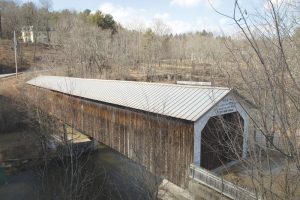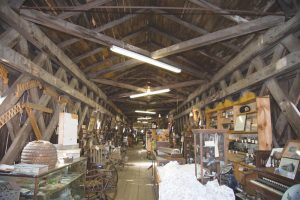Field Work Complements Classroom Learning
In the spring of 2016, a group of eight students completing their master’s degrees in structural engineering at Rensselaer Polytechnic Institute in Troy, New York, were led out of the classroom and into the great outdoors for a very atypical educational experience. After years of calculus and physics, it was time for a much-needed mental break, where textbooks and exams were set aside for tape measures and cameras.
The students headed 30 miles north to Shushan, New York, a quaint hamlet of about 800, to explore and document the historic Shushan Covered Bridge in accordance with the Historic American Engineering Record (HAER) (Figure 1).
The Historic American Engineering Record was established in 1969 by the National Park Service, the American Society of Civil Engineers, and the Library of Congress to document historic sites and structures related to engineering and industry. HAER developed out of a close working alliance between the Historic American Buildings Survey (HABS) and the Smithsonian Institution’s (SI) Museum of History and Technology (now the Museum of American History). From its inception, HAER focused less on the building fabric and more on the machinery and processes within, although structures of distinctly industrial character continue to be recorded. As the most ubiquitous historic engineering structure on the landscape, bridges have been a mainstay of HAER recording. HABS also documented more than 100 covered bridges before 1969. Source: National Park Service www.nps.gov/hdp/haer.
Why such a radical departure from the traditional engineering education experience? It sprang from a class on 19th-century Pennsylvania architecture, attended by the author while studying Architectural Engineering at Penn State University. There were no books, no homework, and no exams, but the class helped to progress the restoration of an 1850s log cabin using period tools. Lessons even included how to “square up” a round log using an ax. The experience left lasting memories and sparked an interest in historic preservation. Seeing first-hand how structures were built and how they had fared over time reinforced the engineering concepts learned in the classroom. Calculations are important, but they are also abstract and without form. The ability to see and touch the end result helps in understanding the theory within the calculations. So many of the structures that structural engineers work with are already built, yet very little classroom time is devoted to existing structures. Classes such as these reduce this disconnect between theory and practice.
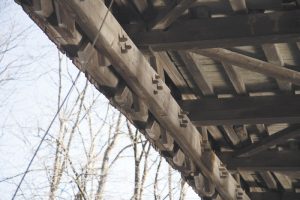
Figure 2. The underside of the bridge; note that the ends of the lattice planks are uneven and without special joinery.
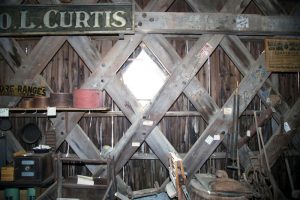
Figure 3. Close-up of the Town lattice truss; openings were frequently framed into the siding of covered bridges to allow natural daylight into the bridge.
Constructed in 1858, the Shushan Covered Bridge is a two-span, 161-foot-long Town Lattice covered bridge, so named after Ithiel Town, a Connecticut architect who patented the design of the lattice bridge in 1820. Town lattice bridges quickly became very popular because they were relatively easy to build. The genius of the Town lattice truss is that the trusses are constructed of sawn planks and not of heavy timber; consequently, no complicated timber joinery was required and the planks were connected with simple wooden dowels called trunnels or “tree-nails” (Figures 2 and 3). Some have estimated that several thousand Town lattice-truss bridges were constructed worldwide, and well over 100 remain in the United States today. Like many Town lattice-truss bridges, the trusses of the Shushan Covered Bridge were assembled on the ground adjacent to the bridge site and then joined on-site atop falsework.
The bridge served the transportation needs of Shushan for 100 years until a “modern” steel bridge was built adjacent to it, at which time the Shushan Covered Bridge was abandoned in-place. After years of neglect and near collapse, the bridge was purchased from Washington County for $1 by the Shushan Covered Bridge Association, who converted the bridge into a museum showcasing farm tools (many of which were donated by local farmers), clothing, and other items of that time period (Figure 4).
Documenting any bridge in accordance with HAER is a very intensive process that involves both time in the field measuring the bridge and archival research to gain insight into the bridge that cannot be obtained from the field. The students spent several days at the bridge, measuring and documenting nearly every accessible structural member. Unfortunately, much of the underside of the bridge could not be accessed because of the Batten Kill below, but representative members of the bridge floor system were observed. The bottom of one of the abutments was not accessible, also due to the flowing Batten Kill, but the top of the abutment could be measured with reasonable accuracy. Throughout the time studying the bridge, non-original and/or non-historic structural members (such as boards that had been replaced) as well as missing members (such as missing trunnels) were noted.
The students completed archival research on Ithiel Town, the Town lattice bridge type, and the Shushan Covered Bridge. Furthermore, they prepared drawings, a short report, and photography, all in strict accordance with the mandates of HAER.
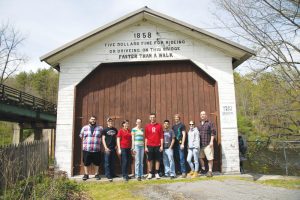
Figure 5. Enjoying a rare warm day at the bridge. Left to right – Antonio D’Elia, Jonathan Schmierer, Jacqueline Sanchez, Jenna Hastings, Brandon Samardich, Navid Safaie, Lucas Deyglun, Noel Gorab, and the author.
Not surprisingly, the students thoroughly enjoyed the whole process (Figure 5). None of them had ever studied a covered bridge before, so this was a new experience for them. Also, seeing and touching the bridge brought abstract engineering concepts to life. An unexpected benefit was that the time spent at the bridge, away from the classroom and the books, relaxed and rejuvenated the students, giving them some much-needed energy for their other courses.
The process of documenting a historic structure is an activity that engineering schools should consider as part of their curriculum. From experience in northern climates, professors may want to consider scheduling the course for the fall rather than the spring. The Shushan Bridge field work began in February, the middle of winter. The students tried to stay warm as best as they could, but several hours in below-freezing temperatures does make field work difficult. Then again, it may prepare the students well for the construction sites they may face in their careers ahead.▪

